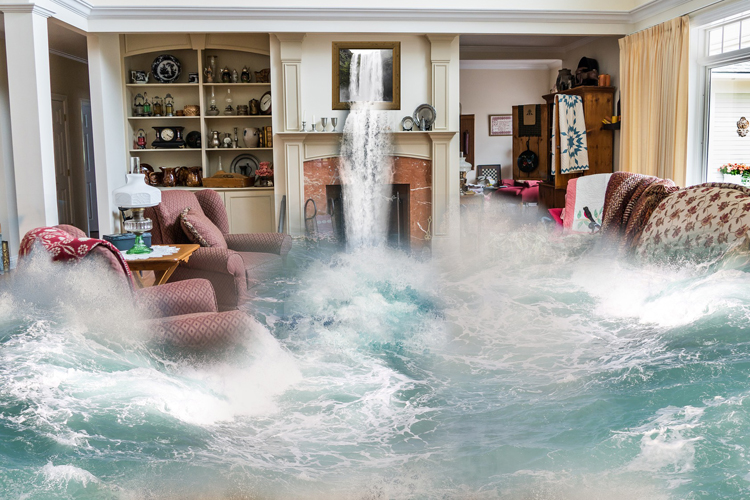Do's & Don'ts of Water Damages.
Do's & Don'ts of Water Damages.
Blog Article
How do you really feel in relation to 5 Home Safety Tips To Reduce The Risk Of Fire And Water Damage?

Water offers life, water intrusion on parts where it's not supposed to be can result in damages. Houses with water damages smell old and musty.
Water can come from lots of resources such as typhoons, floodings, ruptured pipes, leakages, and also sewer problems. In case you experience water damage, it would certainly be great to know some safety preventative measures. Right here are a few standards on how to handle water damage.
Do Prioritize Home Insurance Policy Coverage
Water damage from flooding as a result of hefty winds is seasonal. Nevertheless, you can also experience a sudden flood when a defective pipe instantly ruptures into your house. It would be best to have home insurance that covers both acts of God such as all-natural tragedies, and also emergency situations like broken plumbing.
Do Not Neglect to Turn Off Energies
In the event of a calamity, particularly if you reside in a flood-prone area, it would certainly be suggested to shut off the main electric circuit. This removes power to your entire residence, stopping electrical shocks when water can be found in as it is a conductor. Additionally, don't neglect to switch off the primary water line valve. When floodwaters are high, furnishings will move around and also trigger damage. Having the major valve shut off avoids more damage.
Do Stay Proactive and also Heed Climate Notifies
Pay attention to evacuation warnings if you live near a creek, lake, or river . Doing so decreases possible building damages.
Do Not Disregard the Roofing System
You can stay clear of rain damage if there are no holes and also leakages in your roofing system. This will certainly avoid water from moving down your walls and also soaking your ceiling.
Do Focus On Little Leakages
A burst pipeline doesn't occur over night. Normally, there are red flags that indicate you have actually damaged pipes in your home. You might notice bubbling paint, peeling off wallpaper, water streaks, water discolorations, or dripping sounds behind the walls. Ultimately, this pipe will break. Ideally, you should not wait for things to rise. Have your plumbing fixed prior to it leads to massive damages.
Do Not Panic in Case of a Ruptured Pipeline
Keeping your clearheadedness is crucial in a time of situation. Stressing will only compound the trouble because it will certainly stifle you from acting fast. Timing is vital when it comes to water damages. The longer you wait, the even more damage you can expect. Thus, if a pipe bursts in your house, immediately shut off your main water shutoff to cut off the source. Unplug all electrical outlets in the area or turn off the circuit breaker for that part of the home. Call a reliable water damages reconstruction professional for support.
Water offers life, water invasion on parts where it's not supposed to be can result in damages. Residences with water damage smell old and also mildewy.
Water damages from flooding dues to hefty winds is seasonal. You may see bubbling paint, peeling off wallpaper, water streaks, water stains, or dripping audios behind the wall surfaces. When it comes to water damages, timing is essential.
Some Do's & Don't When Dealing with a Water Damage
DO:
Make sure the water source has been eliminated. Contact a plumber if needed. Turn off circuit breakers supplying electricity to wet areas and unplug any electronics that are on wet carpet or surfaces Remove small furniture items Remove as much excess water as possible by mopping or blotting; Use WHITE towels to blot wet carpeting Wipe water from wooden furniture after removing anything on it Remove and prop up wet upholstery cushions for even drying (check for any bleeding) Pin up curtains or furniture skirts if needed Place aluminum foil, saucers or wood blocks between furniture legs and wet carpet Turn on air conditioning for maximum drying in winter and open windows in the summer Open any drawers and cabinets affected for complete drying but do not force them open Remove any valuable art objects or paintings to a safe, dry place Open any suitcases or luggage that may have been affected to dry, preferably in sunlight Hang any fur or leather goods to dry at room temperature Punch small holes in sagging ceilings to relieve trapped water (don't forget to place pans beneath!); however, if the ceiling is sagging extremely low, stay out of the room and we'll take care of it DO NOT:
Leave wet fabrics in place; dry them as soon as possible Leave books, magazines or any other colored items on wet carpets or floor Use your household vacuum to remove water Use TV's or other electronics/appliances while standing on wet carpets or floors; especially not on wet concrete floors Turn on ceiling fixtures if the ceiling is wet Turn your heat up, unless instructed otherwise

I hope you enjoyed reading our part about Reducing Your Risk Of Water And Fire Damage At Home. Thanks for taking time to browse our piece of content. Sharing is good. Who knows, you may just be doing someone a favor. I am grateful for your time. Visit again soon.
Report this page